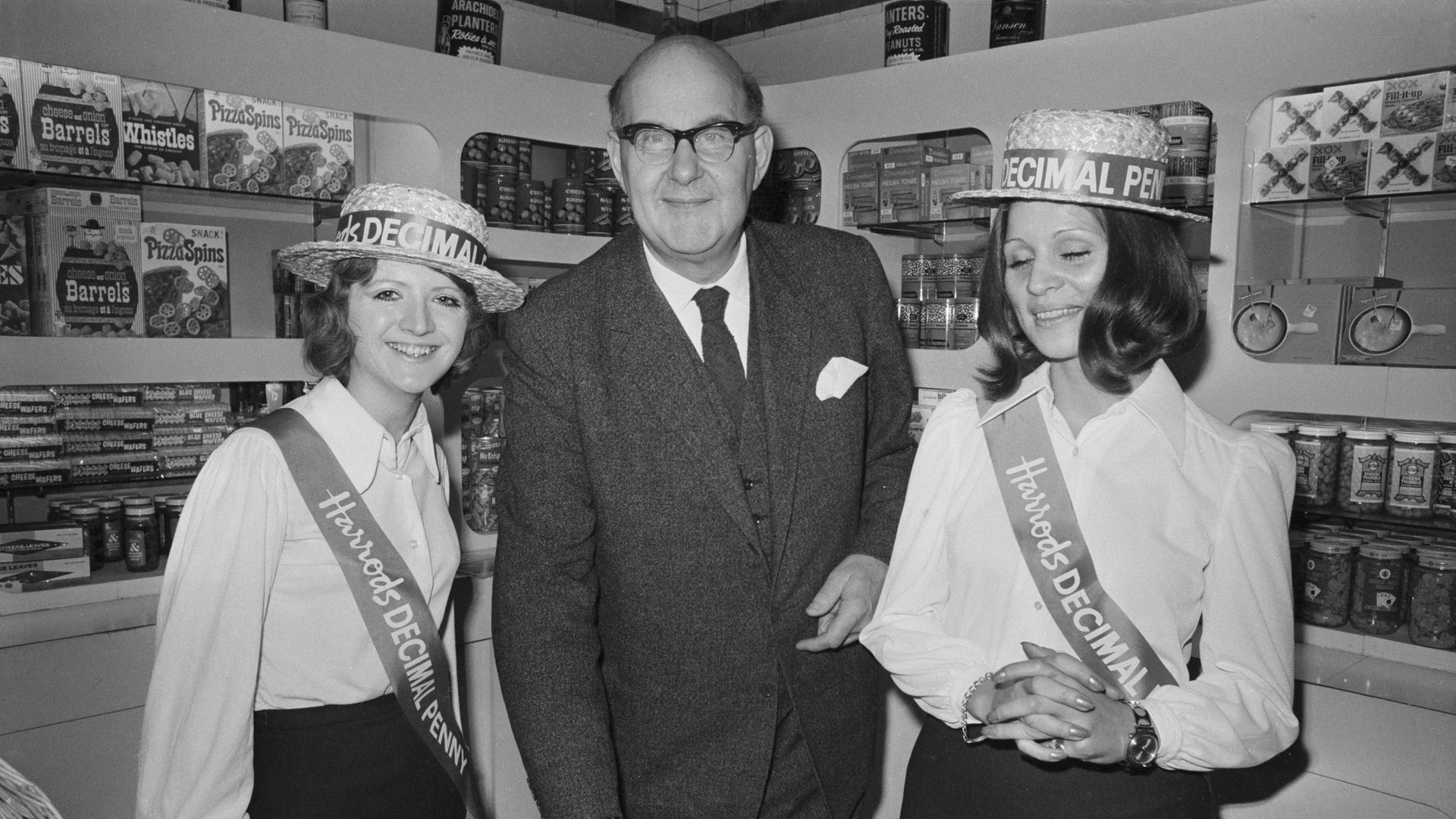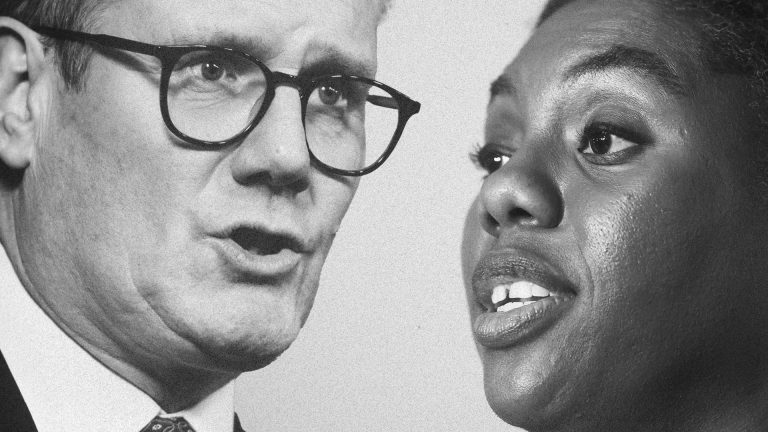
Over the last decade, Britain has become an increasingly cashless society. Due to electronic payments, less money changes hands than in the past and due to the Covid pandemic, many people now actively avoid touching it. We probably wouldn’t miss the coins in our pocket if they were gone.
Fifty years ago things were different. The country had been using a system of currency that had its roots in Roman times. Coins, such as half crowns, thruppenny bits and farthings were part of both everyday life and the national lexicon. However, more or less overnight they were consigned to the history books and replaced by the decimal system we know today.
The old currency, known as the ‘lsd’ system was derived from the Latin denominations of emperor Charlemagne’s Frankish kingdom, the abbreviations originating from librae, a pound of silver divided into 20 solidi, and 240 denari. It spread across Europe and in Britain became pounds, shillings and pence, the ‘l’ developing into a ‘£’ sometime in the mid-1600s.
The old currency effectively used two base numbers: 20, the number of shillings per pound, and 12, the number of pence per shilling (giving 240 pence per pound).
For those unused to the system, it might seem as if this would require remarkable and unnecessarily complex feats of mental arithmetic to complete simple, everyday financial transactions.
However, a system with 12 as a base number had an advantage over a decimal system with a base number of 10: While the latter can be divided by one, two, five and 10, the former could be divided by one, two, three, four, six and 12. It may have been more complex, but it was also more flexible.
This versatility was one reason why Britain remained steadfastly wedded to the old system. However, that didn’t stop decimalisation from being the subject of debate as early as the 17th century.
In 1696, Sir Christopher Wren proposed a system of decimal coinage based on a silver ‘noble’ divided into ten ‘primes’ and 100 ‘seconds’. Eight years later the Russian rubble became the world’s first decimal currency. By the end of the1700s, post-revolutionary France and America had introduced decimal currencies as a symbolic break from their old regimes. During the 19th century, similar systems were established throughout Europe and the Americas.
The Decimal Association, which lobbied for Britain to follow suit, was founded in 1841. During a parliamentary debate on the subject six years later, one of the advocates for change, Sir John Browning, made the case, saying: “Every man who looks at his ten fingers, saw an argument of its use, and evidence of its practicability.”
His simple justification won some favour with his fellow MPs and the following year, Britain’s first decimal coin, the florin, which was worth a tenth of a pound (or 24 pence), was introduced.
Other trial coins were produced and denominations such as dollars and cents considered. However, an 1859 Royal Commission on the subject determined that it was prudent not to “disturb the established habits of the people”. Another Royal Commission convened in the aftermath of the First World War reached a similar conclusion.
By the 1960s momentum had swung firmly in favour of a decimal system. A significant number of Commonwealth countries either had gone or were planning to go decimal.
The British Association for the Advancement of Science and the Association of British Chambers of Commerce co-published a report in 1961 recommending that Britain do the same as “a practical business decision”.
The old currency’s flexibility was being outweighed by the need to operate more easily in an increasingly decimalised marketplace. In response, Harold Macmillan set up the Halsbury Committee which supported the proposed changes. However, the switch was instigated by Harold Wilson in 1966. The Labour PM was motivated in part by a desire to show Charles de Gaulle, who had vetoed British entry to the EC, that Britain had a modern, and European outlook.
Decimal Day was set for February 15, 1971, traditionally a post-Christmas lull for banks, shops and transport companies. Perhaps inevitably given Britain’s spiritual attachment to the Second World War, it was christened ‘D-Day’, shop keepers the ‘frontline troops’. The government decided against a cliff-edge switch, instead opting for a lengthy transition period, managed by the Decimal Currency Board (DCB).
In 1968, new five- and ten-pence coins were introduced into circulation. They were the same size and weight as the existing one- and two-shilling coins (the florin) and had the same fractional value, that is one 20th and one tenth of a pound respectively. Their similarity also meant that the old coins did not need to be immediately withdrawn after the switch. In fact the florin only ceased to be legal tender in 1993, following the introduction of a smaller 10 pence piece.
A new 50-pence coin made its debut at the 1969 FA Cup final, where it was used by referee George McCabe for the pre-match coin toss. It was the world’s first seven-sided coin and had, in part, been designed to roll easily into vending machines, which were beginning to spring up around the country. It replaced the 10-shilling note and again represented the same fractional value as its predecessor.
This meant that the public was familiar with three of the six new decimalised coins and, crucially, what value they represented, by the time the switch occurred. These were supplemented by new half-penny, one-penny and two-penny pieces; ‘coppers’ as they became colloquially known.
The transition was supported by a massive public information campaign. Prices were displayed in both currencies for some time before and after the switch and shoppers issued with conversion booklets.
The BBC broadcast a series of five-minute programmes called Decimal Five. ITV released a drama called Granny Gets the Point, in which a bewildered pensioner was taught the new system by her grandson. The government even commissioned a song called Decimalisation from crooner Max Bygraves.
Behind the scenes politicians were getting nervous. The huge cost, estimated to be in the region of £128m for business and £23.5m for government, fears of inflation, and of a negative public reaction all led to calls for the move to be postponed or even abandoned.
There were also concerns that the Queen might die before the 4.1 billion new coins bearing her likeness went into circulation, wrecking the switchover. However, the government decided to keep calm and carry on.
To facilitate the switch, banks stayed closed on the Thursday and Friday prior to Decimal Day. This gave staff four days to clear cheques written in old money and convert customers’ balances into new money, something that had to be done manually in pre-computerised branches.
Larger shops set up special counters where customers could exchange their old coins for new. Initially, payment was accepted in both currencies, but change was always given in decimal money, the old coinage being incrementally withdrawn from circulation. It had been anticipated that this would take 18 months. Instead it took just six.
Younger members of the population got to grips with the new system quickly. Older people struggled a little more, giving rise to phrases such as “how much is that in real money?”. While some held suspicions that shopkeepers used the transition to put up prices, Decimal Day passed off without any significant problems. In fact it went so smoothly that by the afternoon the civil servants responsible found themselves with nothing to do. So, they gathered round a television set and watched The Magic Roundabout.
The change of currency wasn’t just a practical switch for the country, it was also a moment of deep symbolism. Some saw it as a welcome shift away from Britain’s imperial past and towards a future of greater integration with Europe. For others, that was exactly the problem: a loss of tradition and independence that was compounded when the country joined the European Economic Community (EEC) in 1973.
These feelings increased in the early 1990s when politicians began to debate whether Britain should join the soon-to-be launched euro. Defending the British currency became a focal point for the articulation of anti-European feeling that underpinned the vote to leave the EU in 2016. It was no coincidence that UKIP’s logo featured the pound sign prominently.
Weights and measures also became an article faith for Eurosceptics. The argument to ditch imperial units was made in the 1960s by the same industry groups who had argued for a currency change; it was a logical step that would bring Britain into line with most of the rest of the world. So, when the UK agreed to move to a metric system as one of the conditions for joining the EEC in 1973, it was already government policy.
However, there was little public appetite for another switch. The proposed 1975 deadline came and went without change. The UK kept asking the EU for a delay and a confused dual system emerged. Petrol, for example, is sold in litres but its use measured in miles per gallon.
The issue reached a head after the government introduced new laws banning the same of loose goods in pounds and ounces in 2000. The following year, the so-called Metric Martyr Steve Thoburn, a greengrocer from Sunderland, was convicted for refusing to use metric scales. UKIP leapt to his defence arguing, incorrectly, that this was another imposition from Brussels destroying the British way of life.
It was, however, a microcosm of the tension inherent within Britain’s relationship with the EU; at once wanting to be aligned with its continental neighbours while at the same time endeavouring to carve its own path.
What do you think? Have your say on this and more by emailing letters@theneweuropean.co.uk









